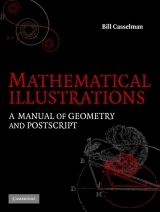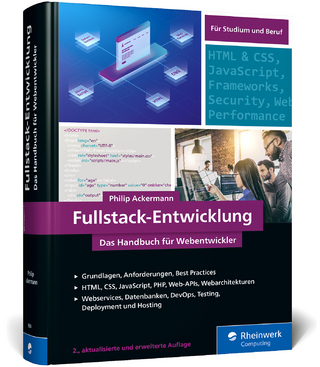
Mathematical Illustrations
Cambridge University Press (Verlag)
978-0-521-83921-1 (ISBN)
- Titel erscheint in neuer Auflage
- Artikel merken
This practical introduction to the techniques needed to produce mathematical illustrations of high quality is suitable for anyone with a modest acquaintance with coordinate geometry. The author combines a completely self-contained step-by-step introduction to the graphics programming language PostScript with advice on what goes into good mathematical illustrations, chapters showing how good graphics can be used to explain mathematics, and a treatment of all the mathematics needed to make such illustrations. The many small simple graphics projects can also be used in courses in geometry, graphics, or general mathematics. Code for many of the illustrations is included, and can be downloaded from the book's web site: www.math.ubc.ca/~cass/graphics/manual. Mathematicians, scientists, engineers, and even graphic designers seeking help in creating technical illustrations need look no further.
Bill Casselman holds a doctorate from Princeton University for his work on automorphic forms. He is currently Professor of Mathematics at the University of British Columbia. Additionally, he is the technical editor of the online collected works of Robert Langlands and the Graphics Editor of NOTICES of the American Mathematical Society.
1. Getting started in PostScript; 2. Elementary coordinate geometry; 3. Variables and procedures; 4. Coordinates and conditionals; 5. Drawing polygons: loops and arrays; 6. Curves; 7. Drawing curves automatically: procedures as arguments; 8. Non-linear 2D transformations: deconstructing paths; 9. Recursion in PostScript; 10. Perspective and homogeneous coordinates; 11. Introduction to drawing in three dimensions; 12. Transformations in 3D; 13. PostScript in 3D; 14. Drawing surfaces in 3D; Appendix 1. Summary of PostScript commands; Appendix 2. Setting up your PostScript environment; Appendix 3. Structured PostScript documents; Appendix 4. Simple text display; Appendix 5. Zooming; Appendix 6. Evaluating polynomials: getting along without variables; Appendix 7. Importing PostScript files; Epilogue.
| Erscheint lt. Verlag | 24.1.2005 |
|---|---|
| Zusatzinfo | Worked examples or Exercises; 364 Halftones, unspecified |
| Verlagsort | Cambridge |
| Sprache | englisch |
| Maße | 182 x 240 mm |
| Gewicht | 789 g |
| Themenwelt | Mathematik / Informatik ► Informatik ► Programmiersprachen / -werkzeuge |
| Mathematik / Informatik ► Mathematik ► Computerprogramme / Computeralgebra | |
| ISBN-10 | 0-521-83921-1 / 0521839211 |
| ISBN-13 | 978-0-521-83921-1 / 9780521839211 |
| Zustand | Neuware |
| Haben Sie eine Frage zum Produkt? |
aus dem Bereich



